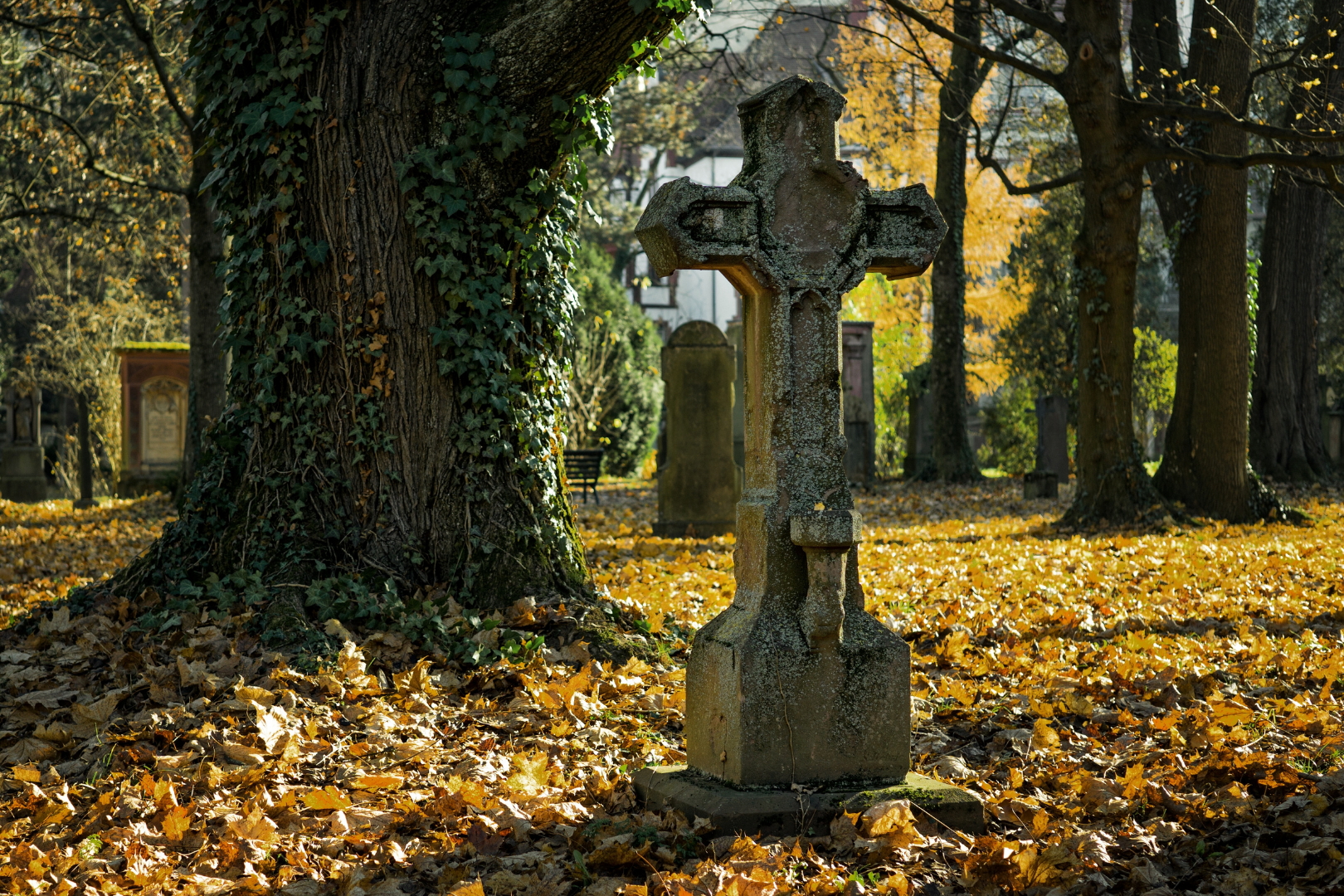
By Bonnie Pool
When I was in elementary school, my dad would often take me to visit Concordia Cemetery on Sundays while the rest of my family was in church choir rehearsal. C.F.W. Walther is buried there, along with many other Lutherans. We would walk down the rows, and my dad would point out names on headstones that he knew from LCMS history. Since then, I have loved taking time to walk through graveyards, especially those that belong to a parish. Just yesterday, while on a walk with my husband, I made us ditch our paved trail to walk through a graveyard we were passing.
It may seem strange and a little morbid to enjoy walking among so many rows of headstones, under which so many rows of bodies lie. And of course, it is undeniable that there is something eerie and sobering about needing large plots of land set aside just to place our dead. Perhaps that’s because, in our heart of hearts, we know death is wrong. Humans were created for immortality. And to stare death—that is, our obvious loss of that immortality—in the face is difficult, as it should be. But while cemeteries testify to our inescapable fragility and mortality, they also shake their fist at death, at sin, and at the power of the devil. It is like a big protest, each headstone a sign that says “Death doesn’t have the last word. Here is my baptized name, the name by which God knows me. He is coming back for me.” Or, if that is too much to fit on one stone, “Asleep in Christ” is a concise alternative.
The practice of a Christian burial is an expression of faith. It demonstrates our belief in the dignity of the human person, in eternal life, and most of all, in the resurrection of the body. Christians confess faith in the bodily resurrection, of which Christ was the first fruit, and our burial practice reflects that.
This is why I find cemeteries so comforting and encouraging. Walking through a graveyard is participating in a communion of saints, of a sort. To walk among Christian graves is to be among the bodies of people who, like you, believe they will be raised again. They believe their body matters. Each Christian grave is a testimony of a life of faith. You have more than only the witness of those you know today; you have more, even, than just the words of those who have died to strengthen your faith. You can go today and lay your hand on the headstones of Christians who have gone before you and see their faith for yourself. 150 years later, I can see with my own eyes C. F. W. Walther’s belief in the resurrection. This man, and all men and women who have died in the faith, are not simply people of the past. Their graves are right here, in our neighborhoods and on our church plots. Consider paying them a visit sometime, and let their faith strengthen your own.
